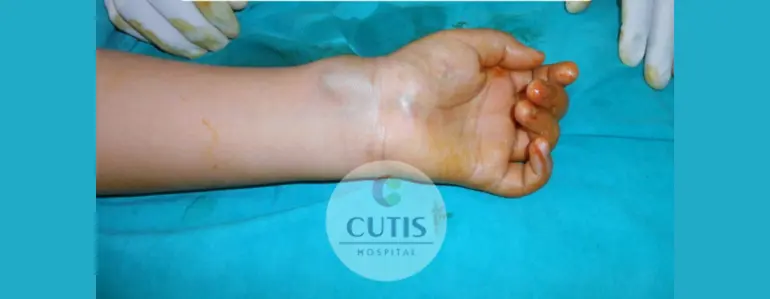Vascular malformations, despite their seemingly straightforward name, present a complex challenge in medical treatment due to their nature and growth behavior. These malformations are networks of improperly formed blood vessels that are present from birth. Although these defects might not be visible at birth, they typically become noticeable as the child grows, with some expanding slowly over time and others enlarging rapidly depending on their type. Vascular malformations are primarily categorized into two types: low flow and high flow, each presenting its own set of challenges and treatment protocols.
In this case, we highlight a low flow vascular malformation in a 12-year-old boy's left hand. The condition first became apparent when he was three years old, initially presenting as a small swelling over his wrist that would recede upon raising the arm. Over time, however, the swelling increased in size and permanence, no longer diminishing when the arm was lifted, and the skin over the affected area turned a dark bluish color. Surgical intervention was ideal when the swelling began to increase, but due to delays, the malformation had grown significantly by the time the child was brought to our facility, extending from his forearm to his wrist and palm, and impacting essential tendons, muscles, and nerves.
The surgical removal of the malformation was conducted with meticulous care under anesthesia. Utilizing a tourniquet to control bleeding and loupes for magnification, we navigated the complex network of vital structures to remove the malformation completely. This procedure demanded extreme precision and patience to ensure that all affected areas were addressed without compromising the child's limb functionality.
Conclusion
The successful resolution of this challenging case underscores the importance of early detection and timely medical intervention in managing vascular malformations. While the surgery left a scar, it was a small price to pay for the complete eradication of the malformation and the preservation of normal function in the child's hand, illustrating the potential for positive outcomes even in complex cases.

 20 December 2018
20 December 2018 HAND SURGERY
HAND SURGERY 0 Comments
0 Comments
